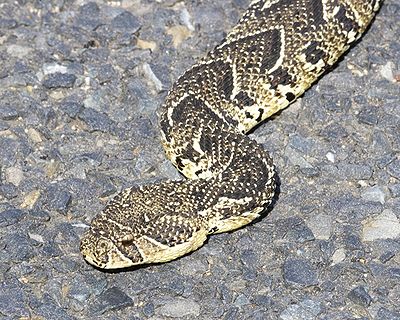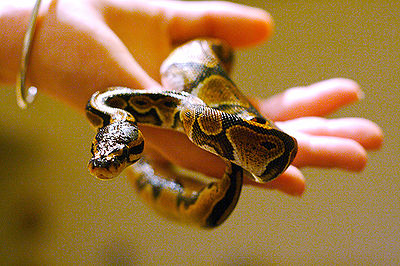
The Western Hognose snake is known by a number of names including the Puff Adder and Plains Hognose.
The Hognose has become a popular pet because of its availability, its wonderful colors, patterns and mutations and its ease of care.
The Western Hognose was classified in the 19th century as a non-venomous, medium sized, diurnal (active during the day) colubrid (non-venomous family of snakes).
Adult males can be from 14-22 inches long and weigh 60-120 grams. Females are much larger, 20-33 inches long and weighing 150-350 grams. The body of the Hognose is thick and covered with keeled (spadelike) scales. The nose is upturned and keeled, hence the name Hognose.
Base colors are normally tan, brown, olive or gray with darker patches or irregular bars. The patches and ground colors can also be green, pink, orange, yellow or red and patches can appear as rows of round spots.
The Hognose’s habitat ranges from southern Saskatchewan and Alberta, Canada through western Kansas and Oklahoma and south through the Texas panhandle. With such a large area, the Hognose can live in grassy areas as well as sandy soil. Its diet in the wild consists of lizards, toads, salamanders and small mammals – mice, rats shrews. The Hognose will sometimes eat turtle eggs, ground birds and carrion.
When feeling threatened the Hognose has several defenses such as a burst of strong musk from its anal glands, tightly coiling its lower body and hissing. It can also flatten its body to appear larger and flatten its neck making it look like a cobra. If none of these tricks work, it will roll onto its back and pretend to be dead.
A Hognose can be kept individually in a 20 gallon aquarium with a large floor area. Accessories should include a water dish that can’t be tipped over and hiding places. Newspapers make the best floor covering.
Check with your pet shop for proper heating and lighting equipment. Hognoses need a basking area too. Temperature at one end of the enclosure should be 90 degrees Fahrenheit and the high 70s at the other end.
Feeding times are weekly to every 10 days. The amount of food depends on the size of the snake. Large females can eat 1 to 2 large mice at each meal. They can be fed fresh/frozen food.
The Western Hognose is not an aggressive snake but it’s best to leave the food in the enclosure. If a bite does occur, it’s usually at feeding time. A bite can result in localized swelling that usually disappears in a day or two. No allergic reactions have been reported.
The varied colors and patterns of the Western Hognose as well as the ease of caring for it make it a popular pet.


